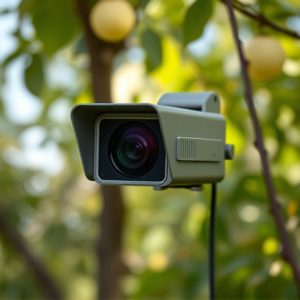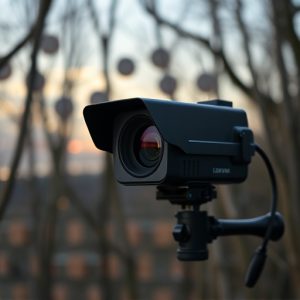Unveiling Hidden Cameras: Professional Sensor Sweeps for Elderly Care Safety
Optical sensor technology is a powerful tool in elderly care, enhancing privacy and safety by detect…….
Optical sensor technology is a powerful tool in elderly care, enhancing privacy and safety by detecting hidden cameras using advanced light detection methods like infrared or visible light scanning. These sensors identify unusual patterns or light signatures, allowing caregivers to maintain a safer environment while ensuring quality care. Regular sensor sweeps involving visual inspections, thermal imaging, and motion detectors are crucial for identifying all potential hidden cameras, adhering to local privacy laws, and selecting the best hidden cameras for elderly care. Post-sweep measures include verifying detected devices, conducting regular audits, and choosing suitable surveillance equipment to protect both safety and privacy.
Uncovering hidden cameras in elderly care settings is a paramount concern for privacy and safety. This comprehensive guide explores professional methods utilizing advanced optical sensor technology, specifically tailored for these sensitive environments. From understanding the intricacies of optical sensors to implementing best practices and advanced sweep techniques, we equip you with the knowledge to identify and mitigate potential surveillance threats. Discover expert tips on ensuring privacy and security post-sweep, including the latest strategies to detect even the most subtle hidden cameras.
- Understanding Optical Sensor Technology for Hidden Camera Detection
- Identifying Professional-Grade Optical Sensors for Elderly Care Settings
- Best Practices for Conducting a Comprehensive Sensor Sweep
- Advanced Methods to Uncover Hidden Cameras in Sensitive Areas
- Ensuring Privacy and Security Post-Sensor Sweep: Tips from the Experts
Understanding Optical Sensor Technology for Hidden Camera Detection
Optical sensor technology plays a pivotal role in detecting hidden cameras, especially in sensitive environments like elderly care facilities. These sensors are designed to identify and locate visual devices that can invade privacy. By utilizing advanced light detection and analysis, they can unmask best hidden cameras used for clandestine surveillance.
In the context of elderly care, understanding how optical sensors work is crucial. They employ infrared or visible light to scan areas and detect unusual patterns or light signatures that may indicate the presence of a hidden camera. This technology ensures that privacy is maintained, empowering caregivers to create safer environments for their charges without compromising on quality of care.
Identifying Professional-Grade Optical Sensors for Elderly Care Settings
When it comes to elderly care, ensuring safety and well-being is paramount. Identifying professional-grade optical sensors, often disguised as best hidden cameras for elderly care, plays a pivotal role in this aspect. These discreet devices offer non-intrusive monitoring solutions, allowing caregivers to keep an eye on patients without compromising their privacy or comfort.
Opting for high-quality optical sensors ensures accurate and reliable detection. Look for features like advanced motion capture, clear image resolution, and night vision capabilities. Discreetly installed in common areas or patient rooms, these best hidden cameras for elderly care can help identify potential issues, such as falls or unusual behavior, enabling prompt intervention by caregivers.
Best Practices for Conducting a Comprehensive Sensor Sweep
Conducting a thorough sensor sweep is paramount, especially when dealing with sensitive environments like elderly care facilities. The best practice begins with identifying all potential hidden cameras or surveillance devices, which may include covert cameras disguised as everyday objects. A comprehensive approach involves a meticulous visual inspection, utilizing high-resolution cameras and specialized lighting to ensure no nook or cranny is overlooked.
Professionals should also employ advanced optical sensor detection methods. This includes using thermal imaging technology to identify heat signatures that could indicate the presence of hidden devices. Additionally, infrared sensors and motion detectors can help pinpoint suspicious activity. For optimal results with Best Hidden Cameras for Elderly Care, it’s essential to adhere to local privacy laws and regulations, ensuring any surveillance measures are ethical and transparent.
Advanced Methods to Uncover Hidden Cameras in Sensitive Areas
In the quest to maintain privacy and security, especially in sensitive areas like elderly care facilities, advanced methods are increasingly necessary to detect hidden cameras. Traditional visual inspections can be time-consuming and often miss subtle or cleverly concealed surveillance equipment. Modern optical sensor detection techniques offer a game-changer in this domain. These state-of-the-art tools employ a combination of specialized sensors, infrared technology, and pattern recognition algorithms to uncover even the best hidden cameras. By simulating various lighting conditions and analyzing reflections, these methods can detect devices that are designed to blend into their surroundings.
When it comes to the best hidden cameras for elderly care, professionals opt for discrete and non-intrusive equipment that aligns with privacy standards while ensuring safety. Advanced optical sensor detection sweeps enable thorough assessments, allowing caregivers and security personnel to identify potential threats without causing disruption. This proactive approach is crucial in creating a secure environment where residents can feel safe and respected, fostering trust between the caregiving staff and the elderly individuals under their watchful eye.
Ensuring Privacy and Security Post-Sensor Sweep: Tips from the Experts
After conducting an optical sensor detection sweep, ensuring privacy and security is paramount to protect sensitive data from unauthorized access. This is especially crucial when dealing with high-risk areas such as elderly care facilities where the last thing residents or their families want is for private moments to be compromised. The experts recommend several post-sweep measures to fortify security.
Firstly, it’s essential to verify that all hidden cameras, if detected, are properly secured and rendered inoperable. This might involve physically destroying them or rendering them useless through specialized technology. Additionally, conducting regular system audits can help identify any potential loopholes or vulnerabilities left by the sweep process. Best Hidden Cameras for Elderly Care should be carefully selected to meet specific needs without infringing on privacy, ensuring only legitimate surveillance for safety purposes.
In conclusion, detecting hidden cameras using advanced optical sensor technology is a multifaceted approach that requires a deep understanding of both the equipment and best practices. By identifying professional-grade sensors suitable for elderly care settings, implementing comprehensive sweep methods, and employing advanced techniques in sensitive areas, security professionals can ensure the privacy and safety of residents. Post-sweep, adhering to expert tips on maintaining security further reinforces the integrity of the process, making it a valuable guide for any facility looking to safeguard their environment, especially when considering the best hidden cameras for elderly care.


